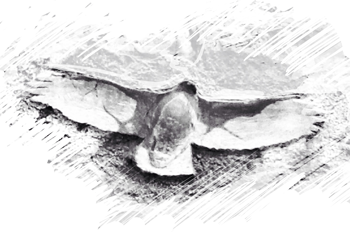
Posh Name: Buteo buteo
Diet: Buzzards are carnivores, hunting for small animals such as rabbits, mice, voles, insects and little birds. A big buzzard has been known to snatch a small lamb and carry it away! They also like carrion – dead rotting meat – and will swoop down for road kill or to snatch another animals leftovers!
Habitat: Buzzards like to live in high up places like tall trees, seaside cliffs, mountains, and the outskirts of forests, ideally near to large open spaces where they can hunt their prey easily from above.
Lifespan: In the wild buzzards usually live around eight years, but the oldest wild buzzard lived to be 25 years and four months old!
Length: 50-55cm.
Wingspan: Up to 1.5m.
Home: Buzzards live in large nests in trees or on ledges in cliffs. In trees they use sticks to make a platform, which they line with smaller twigs, bracken, grass and moss. Buzzards are very house proud and like their nests to look beautiful! They decorate them with fresh ferns and leaves and replace them regularly so they always look nice and green!
Mating and Courtship: In spring, at the start of the mating season, buzzards perform wonderful displays of aerobatics, swooping and diving and loop-the-looping, to attract a mate. Once they find a mate buzzards will dance together, round and round in circles in the sky, facing each other. If you see two buzzards dancing like this it means their nest is nearby. Buzzards mate for life so once they’ve found a partner they will dance together forever!
Babies: Buzzards lay two-four eggs, one every couple of days, usually in mid April. The eggs are large and blue-white with red and brown splotches. They hatch after 33-35 days, one at a time so the mother has time to look after each newborn separately. For the first week of their lives, the mother guards her chicks while the father hunts. Then both parents go out to hunt while the chicks grow and learn to hunt for themselves. The chicks fledge at 50-55 days old – they grow their adult feathers, and then stay with their parents for another six weeks until they’re old enough to go out and find a mate of their own.
Defining Features: Buzzards have broad, rounded wings, a short neck and a rounded tail with grey and brown bars or stripes on their tail feathers. They are usually brownish, with yellow scaly legs and a lethal hooked brown beak.
Peculiar Behaviour: Buzzards like to dance in the sky, doing wonderful summersaults and dropping down, wings folded in, almost until the hit the ground, before pulling up again. You’ll see them hanging over fields looking out for prey; wait for them to drop and see what they come up with! Also if you’re driving in the country you might see one perched on a telegraph pole on lookout for tasty treats.
Weaponry: Buzzards most lethal weapon is their keen eyesight. They can spot a rabbit or a mouse from high above and drop to catch it with their terrible talons in a heartbeat.
Vulnerability: A hundred or so years ago, gamekeepers used to shoot buzzards and they became very rare, but recently the buzzard population has increased so that they are becoming very common. As hunters of the skies they are not vulnerable to many other animals; they are super-birds!
» Badger
» Buzzard
» Dormouse
» Fox
» Hedgehog
» Mouse
» Otter
» Raven
» Robin
» Roe Deer
» Squirrel
» The Green Man
» Weeny
Is it a mouse? A tiny wee dormouse down below? His eyes are so sharp, he picks up the slightest movement; a rustle in the corn, a scurrying through long grass.
Is it a bird? His terrible talons can pick tiny starlings straight out of the sky.
Could it be a rabbit, buzzard’s favourite food? Or even a lamb? With talons so terrible and wings so strong he can carry away a small white lamb.
What do you think he’s looking at?

